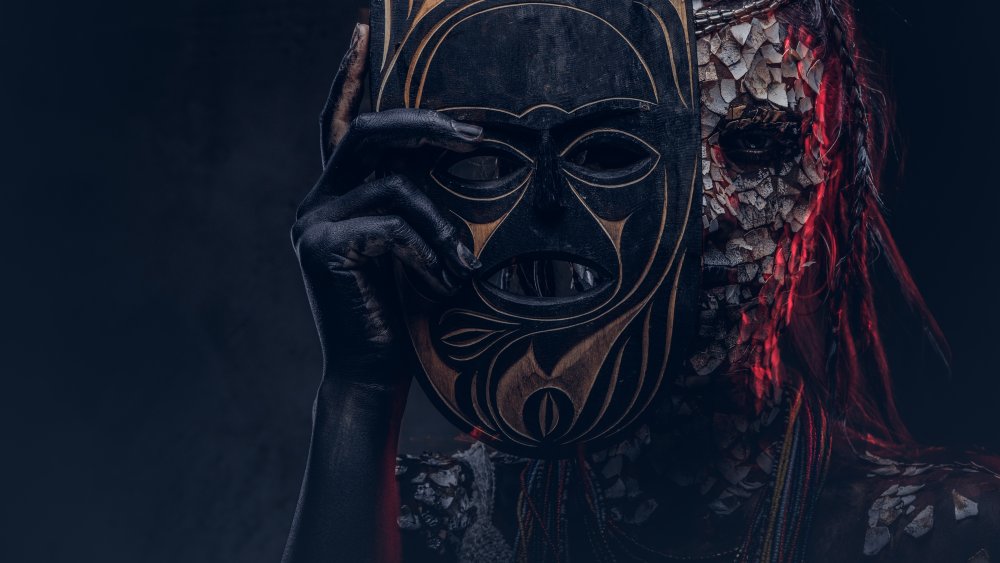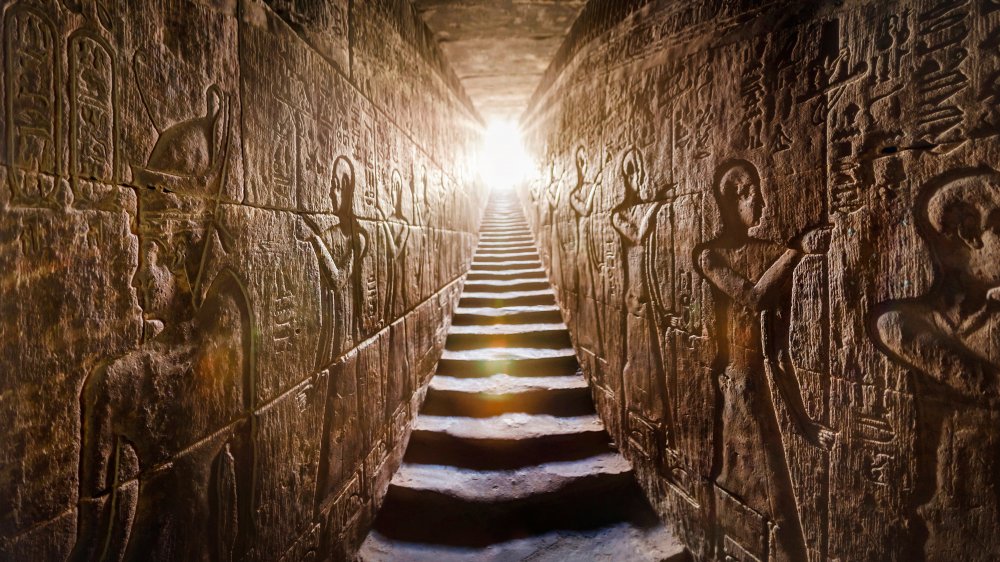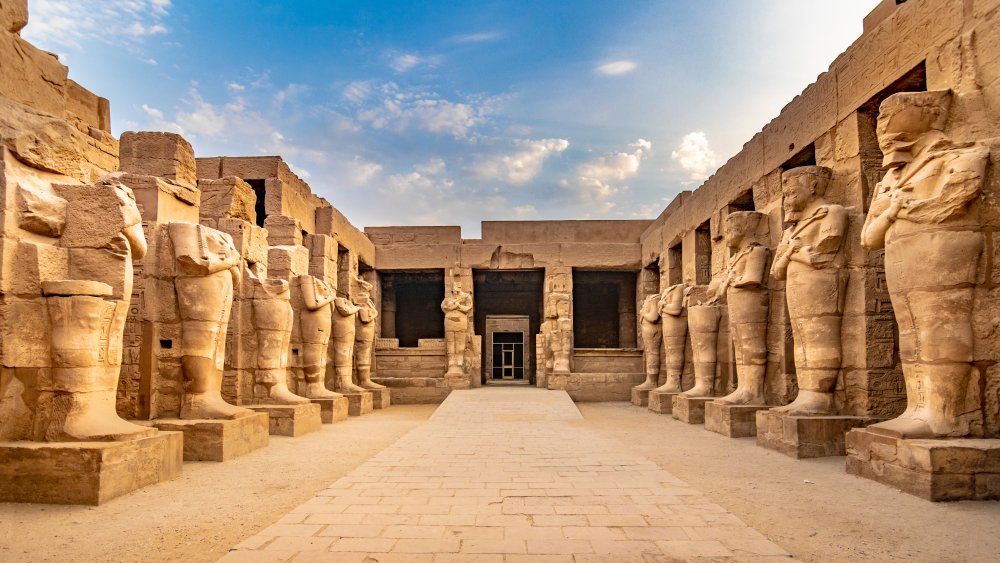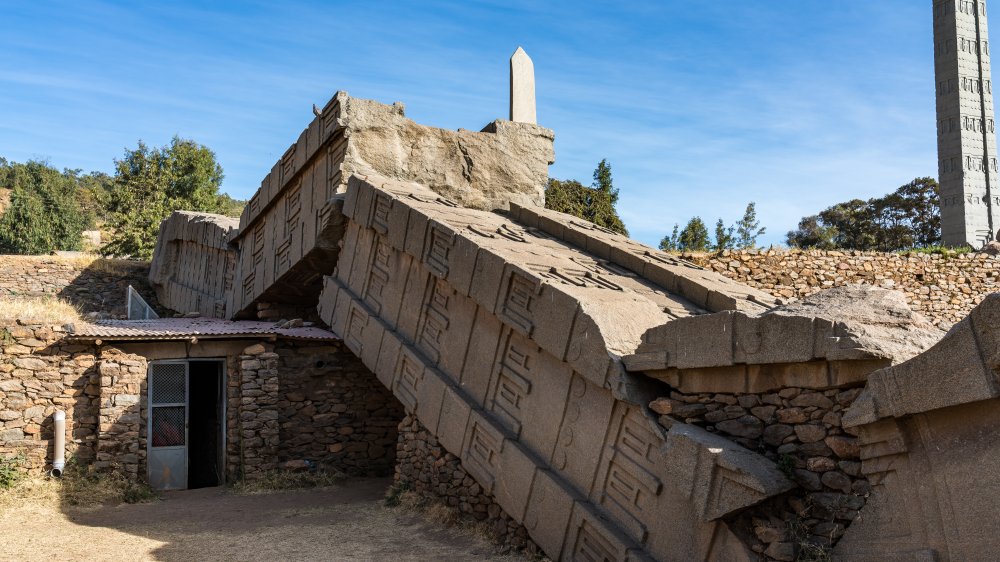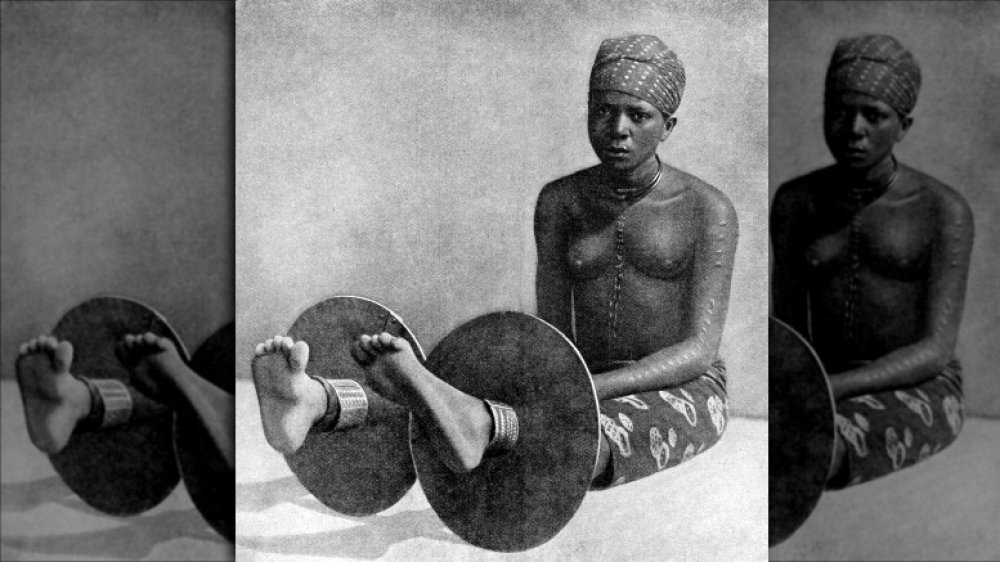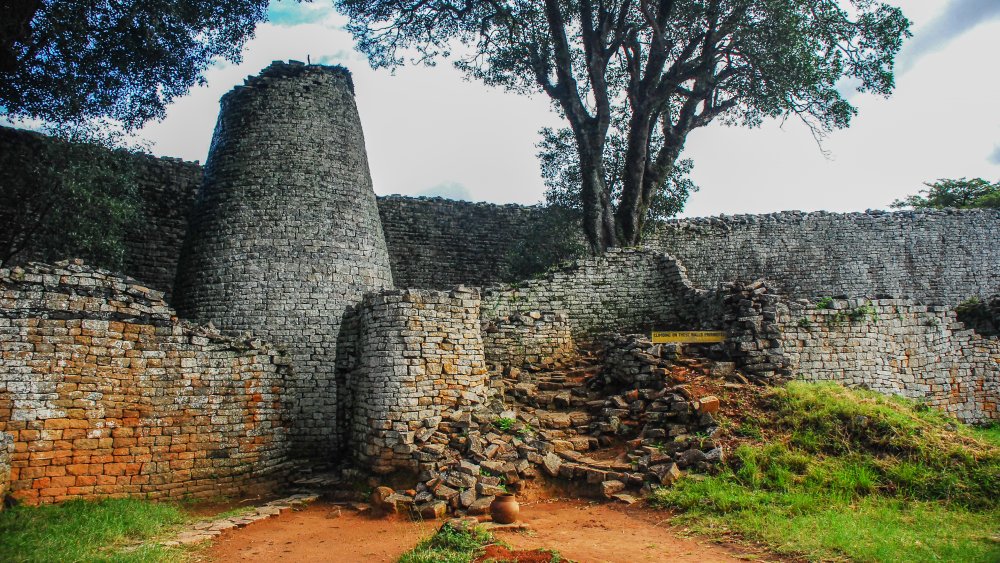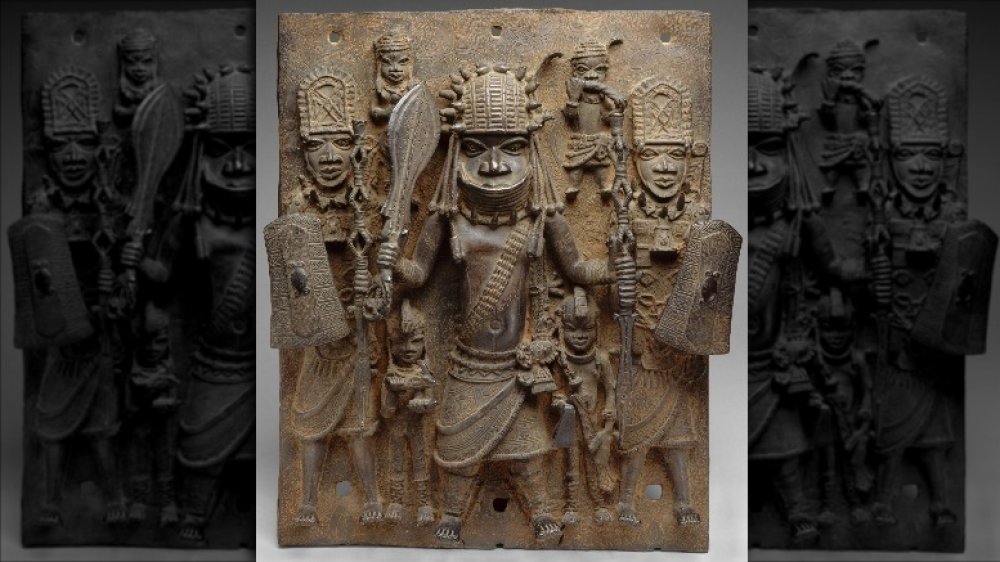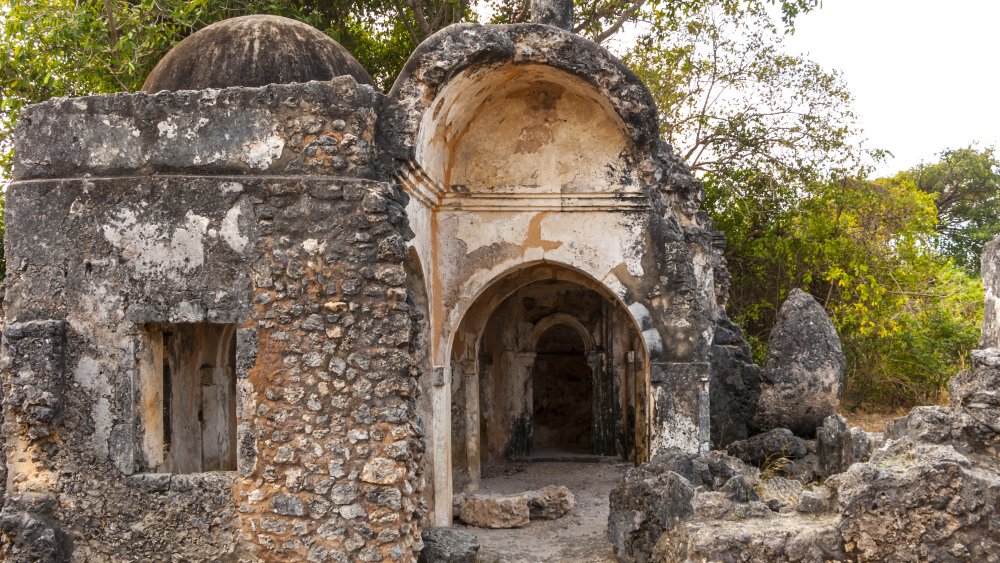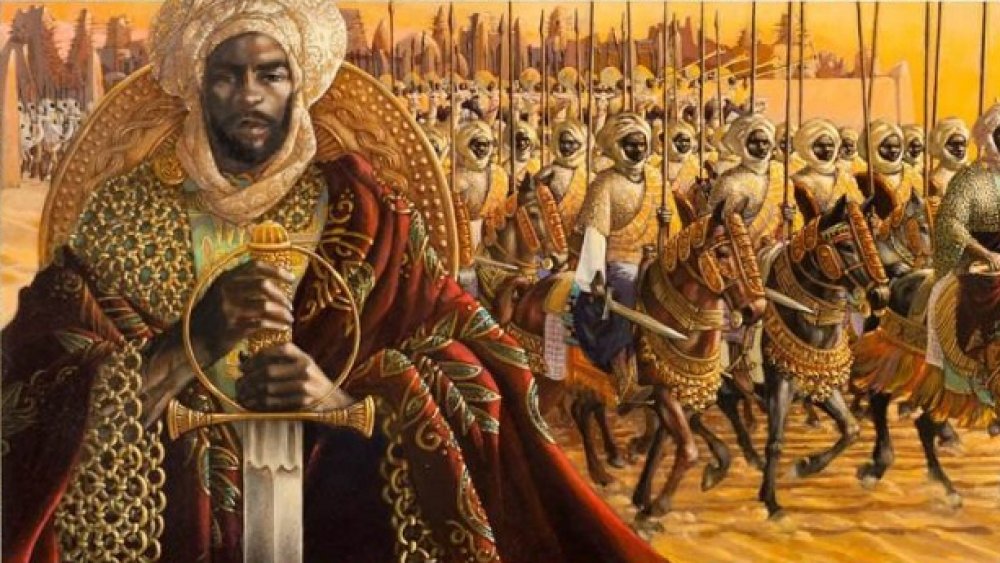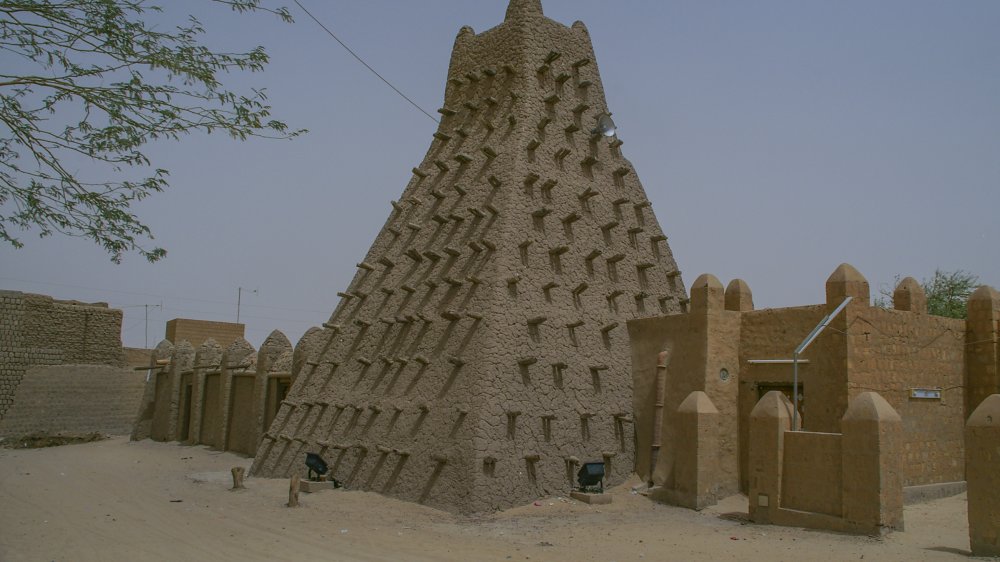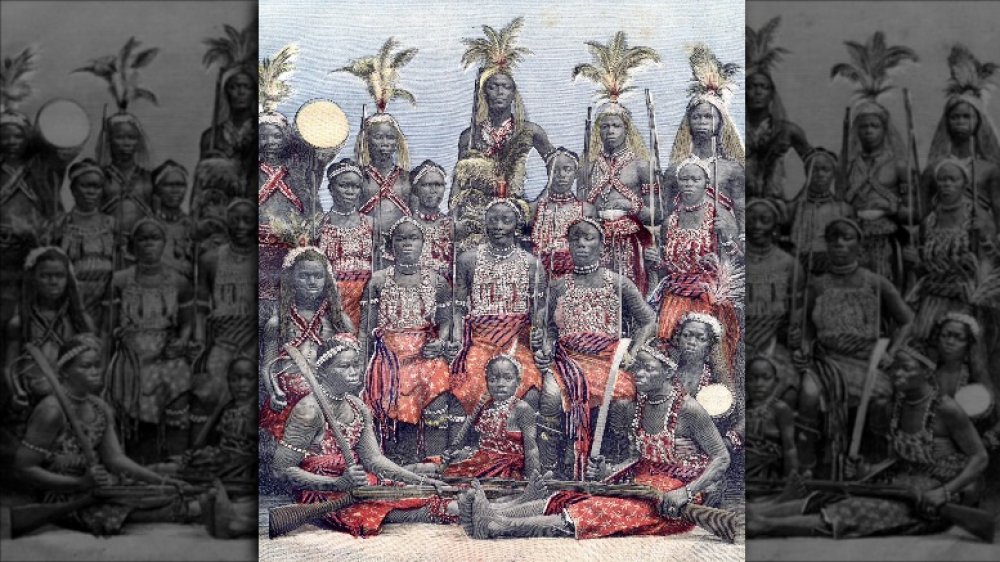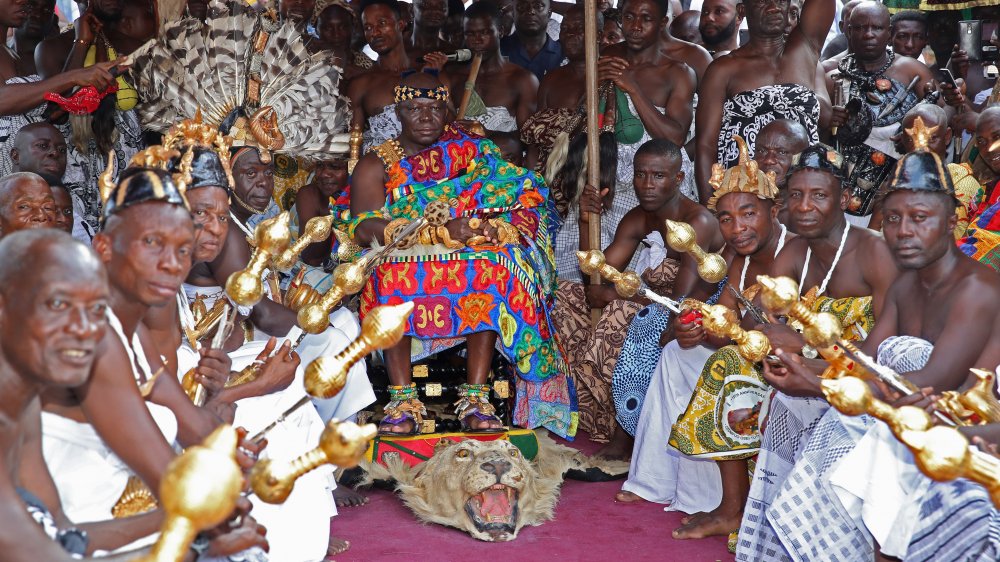Incredible African Civilizations You've Never Heard Of
We may receive a commission on purchases made from links.
It's not called the Birthplace of Humanity for nothing — every human on the planet can trace their ancestry to Africa. Apes clambered out of the trees and onto the savanna a few million years ago and eventually became our upright ancestors. But when some early humans wandered out of Africa in search of new territory, others remained, adapting, growing, and creating some seriously impressive civilizations.
We're all familiar with Egypt, of course — land of the pharaohs and home to a few millennia of crazy culture and history. And some folks might be up on their early East African history and know the story of Kush, the empire just to the south of Egypt that had a rich back-and-forth with their northern neighbors over the centuries.
But what do you know about the other grand cultures of the African continent? Some were destroyed by colonial invaders, and others were marginalized or disassembled but have cultural influences that live on to this day. Regardless, Africa can truly lay claim to being a hotbed of art, culture, trade, and innovation, with some kingdoms and civilizations that rival anything on Earth.
The Kingdom of Punt
Before there was Egypt, there was Punt — even the Egyptians believed they had to come from somewhere, and that somewhere was this legendary African empire. Dating to at least 3000 BCE and originating somewhere in the vicinity of modern-day Somalia, Punt was "the land of the gods" to the ancient Egyptians, according to the Ancient History Encyclopedia.
Not only did gods and goddesses like Hathor supposedly come from this super-rich, fertile kingdom, but all kinds of valuable trade goods did, too. According to Ancient Origins, one key trade expedition launched by female pharaoh Hatshepsut returned with not just incense and live plants but also gold, leopard skins, and a couple of live elephants.
That incense was a key trade item, though — from what we can tell from Egyptian historical records, as detailed by Think Africa, Punt was the source of several key kinds of incense used in all kinds of Egyptian rituals. If you wanted to make nice with the gods in ancient Egypt, you had to go through the mysterious kingdom of Punt to do it. As PBS tells it, massive expeditions regularly brought Egyptian goods like tools and lumber to Punt, returning with precious luxury goods.
But to this day, scholars aren't quite sure where the kingdom actually was ... the pharaohs kept that under wraps.
The Kingdom of Yam
While we're not entirely sure that Yam existed, because no one's ever found the dang thing, we also don't know that it didn't exist. Dating to around 2500 BCE, Yam is referenced in several Egyptian burial texts and was linked to the Nubian-Kushite empire, per Ancient Sudan. If it was real, it was probably somewhere in modern-day Chad or Sudan, according to David O'Connor in the Journal of the American Research Center in Egypt. Scholars think it was somewhere south of Egypt and probably ruled by a dark-skinned people, as related by Robert Bauval and Thomas Brophy in their book Black Genesis.
From inscriptions dating to 2200-ish BCE, found in the tomb of Harkhuf, a governor of Upper Egypt, we know that Yam was pretty dang powerful — enough to pose a threat to Egypt and prompt Harkhuf to make some expeditions to decide whether to focus on trade or war. Much like the kingdom of Punt, Yam was super-wealthy, providing ivory, ebony, and furs, according to research detailed at Ancient Origins.
But Yam was also a military power known for its mercenary forces, and Harkhuf felt threatened enough to engineer a coup. He ended up going the diplomatic route — he "went forth after [the ruler of Yam] to the land of Temeh and pacified him, until he praised all the gods for the king's sake." All the better to trade with you, my dear...
The Kingdom of Aksum
Moving into the Common Era, Africa's great civilizations kept up their global reputation for being incredibly wealthy trade empires. Aksum, which flourished between 100 and 940 CE or thereabouts, according to Heritage Daily, linked major trade routes in Africa and the Middle East. If you wanted to move goods or become a major player in international trade, you had to go through this cutthroat kingdom, located in modern-day Ethiopia and Eritrea.
Rome, the Byzantine Empire, Indian trade moguls, Arab caravans — they all did business with Aksum. As Khan Academy notes, at the civilization's height in the third and fourth centuries, Aksum was considered one of the four major empires of the world. Unfortunately, we only have other people's word for what made Aksum tick — although it developed its own script, called Ge'ez, we don't have any remaining records from the Aksum period.
The script is still used today, albeit mostly for religious functions. That's because traces of Aksum still linger in Coptic Christianity, the native flavor of the religion in the Horn of Africa and around Ethiopia. According to Encyclopedia Britannica, the Aksumite kings were some of the earlier converts to Byzantine Christianity and may have used religious wars as an excuse to expand their territory in the 300s, taking over a pretty good chunk of East Africa before being pushed out by Arab and Persian traders.
The Ghana Empire or Wagadu
Confusingly, the ancient Ghana Empire, called Wagadu by its native people, wasn't actually geographically linked to modern Ghana — it was really somewhere near Mauritania and Mali and flourished from the 500s to the 1200s CE.
And man, do we mean flourished. Wagadu was a kind of African El Dorado, known to Arab and European traders as "the land of gold," according to the Ancient History Encyclopedia. The Wagadu kings controlled all the gold prospecting and processing in the area and, as a result, had a huge amount of power. In fact, they were so powerful that their empire came to be called simply the local word for king: "ghana." One Arab trader was particularly impressed with the show of wealth, as the BBC relates, gushing over the amount of silver and gold jewelry that everyone wore. Even the king's dogs were wearing gold collars. That's some serious bling.
Gold wasn't Wagadu's only claim to fame, though. Its capital city, Koumbi Saleh, was home to up to 20,000 people despite being perched at the edge of the Sahara Desert. As Khan Academy relates, it's thought that the people of Wagadu had some pretty advanced irrigation and agriculture practices to enable them to prosper in such a harsh climate.
Igboland and the Nri Kingdom
While some African empires used trade to absorb and undermine other nations, one federation in West Africa went a different route. Igboland, including the influential Nri Kingdom, was a super-pacifist but highly theocratic nation-state in the general area of modern Nigeria that relied on both trade and religion to cement its influence. Unfortunately, a lot of their contributions and landmarks (including some amazing bronze sculptures) have been forgotten today because they didn't do the whole "king" thing in the way Europeans thought about it, so those Europeans didn't consider them as a "real" civilization.
Basically, the Igbo people emerged during the 900s CE and created a cult-like religion that they used to alternately entice, coerce, and outright strong-arm people into joining. As Chanda Burrage at Pennsylvania State University relates, the leader of the Nri "kingdom" was more like a combination of divine ruler and elected official. The position of eze Nri wasn't inherited — the leader was picked for his mystical powers. He didn't have any military authority and only ruled as long as he showed some sort of religious influence. No supernatural mojo on display, and boom, you're out of office, bud.
Today, the Igbo people are still the dominant culture in the region and retain a number of traditional practices, according to Punch magazine. Think Africa notes that the Nri monarchy is one of the oldest in existence and still plays a role in Nigerian politics and culture.
Great Zimbabwe
Another case of Europeans deciding that African civilizations didn't really "count" if they didn't make sense in their own personal worldview, Great Zimbabwe was misunderstood and misinterpreted for decades before scholars figured out just how awesome it really was.
This enormous "lost" city in central Zimbabwe dates to 1100 to 1450 CE, according to UNESCO. When they first stumbled on it, Europeans were convinced it couldn't possibly have been built by Africans and came up with some wacky theories about "whodunnit" (like the Phoenicians, Greeks, or even King Solomon, per The Guardian). As Dr. Nancy Demerdash, writing at Khan Academy, points out, Great Zimbabwe's massive stone structures are the largest pre-modern constructions in Africa after the pyramids. That's some impressive engineering, with three major linked sites comprising a series of huge stone walls and more than 250 royal houses, plus all the buildings for your average everyday folks — at least 20,000 of whom likely lived in the city.
Britannica notes that we're pretty sure the people who lived there were Shona, but we don't know much else. They had cows, they built awesome stuff, and they traded — but they were long gone by the time Portuguese traders turned up in the 1500s. So we're left to wonder about the culture that built such a nifty city.
The Empire of Benin
Much of what Westerners know about Africa is based on the transcontinental slave trade. That horrible practice enabled vast European empires to get stuff done with no labor cost, but it also enabled African kingdoms to flourish and expand, as Black History Month admits. A lot of African nations supplemented their trade in luxury goods like gold, furs, and ivory with a booming business in people — they would expand into neighboring territories or send raiding parties to capture people who would then be sold off to other African nations or to Arab or European slavers, as Dr. Sandra Greene of Cornell University relates.
The Empire of Benin in West Africa was a center of art and culture, as pointed out by Khan Academy. However, as the Ancient History Encyclopedia relates, it was also an unrepentant slaving nation, building up its influence and wealth between the 1200s and 1897 by selling whatever — or whoever — they could get their hands on. And that included loading up Portuguese and British ships with African slaves, as National Geographic notes.
That trade with the British came back to bite Benin in the late 1800s — English forces burned Benin's capital to the ground in 1897, as the BBC relates. Still, cultural traditions and artistic practices dating back to Benin's heyday remain today among the Edo people in West Africa.
Kilwa Kisiwani and the East African trade network
In case you hadn't noticed, Africa was basically the luxury goods center of the world for, oh, a couple millennia. From ivory and incense to spices, furs, exotic animals, and the eternally popular gold, Africa had it all — for a price.
From the 1200s to the 1500s, a trade network in East Africa centered on a city called Kilwa Kisiwani made the most of its awesome location at the intersection of Africa, the Mediterranean, and the Middle East to pretty much control the trade in gold and salt — two things the medieval world couldn't get enough of. As National Geographic highlights, Kilwa Kisiwani, in modern Tanzania, was a thriving, multicultural metropolis. It mixed Persian, Islamic, and African influences to create its own dialect, culture, and architecture unlike anything the world had ever seen.
And it was all centered around how best to do business, according to ThoughtCo. As UNESCO notes, Kilwa and the East African trading network it hosted dealt in a thriving back-and-forth of luxury products, from Persian enamel to Chinese porcelain and African ivory, rare woods, and gold. It was the principal port on the Indian Ocean through the end of the 14th century, when the Black Death put the kibosh on a lot of international trade.
The Mali Empire
Whether driven by curiosity or greed, humans have always wanted to see what's over the horizon. And when you're at the helm of a massive trading empire, finding new land to exploit and new people to swap with can become an obsession.
That seems to have been the case in the Mali Empire of West Africa, which ran from about 1240 to 1645, according to the Ancient History Encyclopedia. These daring explorers sent an expedition to see if they could find the end of the Atlantic Ocean all the way back in the 1200s, way before Columbus, and were known to have been immensely powerful and wealthy by the 1300s, when that tale was related.
One historical account of the empire relates that its most famous ruler, Mansa Musa, was so rich — and so generous with that wealth — that when he went to Mecca on the Hajj, he threw around enough gold to trigger a decade of inflation, according to South African History Online. As Oxford Research Encyclopedias points out, though, we have to take that and other accounts with a grain of salt — we don't have any written records from Mali itself and can only trust the word of some seriously impressed Arabic traders and travelers. Still, these guys got around and had seen some stuff ... if their jaws were dropped at the culture, wealth, and accomplishments of the Mali Empire, you can be pretty sure it was epic.
The Songhai Empire
As the Mali Empire collapsed due to internal political squabbles, another West African trading nation stepped in. The Songhai Empire thrived from 1460 until 1591, according to Ancient History Encyclopedia. King Sunni Ali took advantage of Mali's court disputes to start a systematic military campaign against his rich neighbors, helped along by having the only naval fleet in North Africa. He soon cemented his rule and took control of the lucrative trade routes, as South African History Online relates.
Many of Songhai's commoners were pagans, while the urban elites were Muslim — this caused some tensions, but nothing that a heavily outfitted cavalry and some bribes in the forms of tax incentives couldn't smooth over, as Britannica notes. Songhai rapidly became a center of learning and culture, with the city of Timbuktu becoming shorthand for "somewhere rich and exotic and important that's far, far away from here," as the BBC helpfully recounts.
Unfortunately, being rich and culturally relevant means that other people are going to put you in their crosshairs ... and that's exactly what happened to the Songhai Empire. After a century or two of being the big dog in the region, fiercely putting down rebellions and consolidating power through religion, trade, and war, the Songhai got a taste of their own medicine when the Moroccan Empire sent a platoon armed with muskets to go against their swords and spears.
Dahomey
So, those badass warrior women from Black Panther? Not made up.
The Dahomey Empire, which thrived around modern Benin from roughly 1600 to 1904, is best known today for a legion of fearsome female warriors who lived as part of the king's extended family. As Smithsonian Magazine notes, Western visitors were so impressed with the Dahomey's military might that they referred to the nation as "Black Sparta" and called its elite fighting force "Amazons."
Armed with spears, clubs, and giant two-handed straight razors, the Dahomey women were trained to ignore pain and wade into battle against any enemy, no matter how outmatched they were — they even went up against French infantry without batting an eye, though they suffered nearly total losses. But Dahomey's women weren't just warriors. As Encyclopedia Britannica points out, for every male court official, there was a female counterpart who kept an eye on his actions and reported back to the king — talk about checks and balances.
Dahomey was also a typical West African trading power, dealing in luxury goods like tobacco as well as slaves, according to Dr. Toby Green. Black History Month points out that Dahomey actually opposed British attempts to end the West African slave trade in the mid-1800s, since it was so lucrative. Eventually, the Dahomey had to cave to British pressure — and then, by 1904, to French attacks that put an end to the glory days of African warrior women.
The Asante (Ashanti) Empire
One of the last major African empires, the Asante (or Ashanti) ruled a huge swath of West Africa centered on modern Ghana from 1701 through the 1900s — yes, that late. And no, you probably haven't heard much about them, because of crappy Euro-centric education. But learning their history would've livened up second period for sure: They were super-rich and had progressive leadership, amazing art, and, yep, plenty of slave trading.
Black Past relates how the Asante Empire was founded on the political drive of Osei Tutu, who solidified his reign by creating some new religious ceremonies and a holy relic or two. The new king busily set about ruthlessly dominating trade in gold, ivory, and slaves, according to Cultures of West Africa. As PBS points out, the riches this brought allowed the kingdom to flourish artistically, producing amazing sculptures, furniture, and the coveted kente cloth that's still woven today.
But although the Asante kings gained some solid insights into trade monopolies from their predecessors, they apparently forgot to learn any lessons about keeping Westerners at arm's length. Their fantastically efficient bureaucracy and vast wealth couldn't protect them from the British military. After some brutal wars, by 1902, any pretense of being an independent nation was gone: Asante was officially a British colony, per Encyclopedia Britannica.
However, as Cultures of West Africa points out, the Asante kings were never formally deposed, and the most recent king was enthroned on Osei Tutu's original golden stool in 1999.
